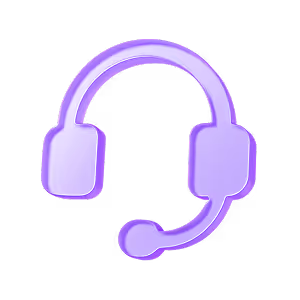If you think about it, asking a random professional for advice or help should never work.
After all, you want them to give up precious time in their day to share their hard-earned wisdom and experience with a stranger -- and a salesperson, no less.
So, why do people ever say yes to coffee dates or phone calls with reps? It’s possible the person asking got lucky and stumbled upon someone who’s incredibly altruistic. But more often than not, they reached out in the right way.
Want to make your chances of sending an effective warm email to an important person higher? Follow these four best practices.
1. Don’t ask to “pick their brain.”
I’ve seen people involuntarily cringe after getting requests to “pick their brain.” This phrase conjures up images of zombies, vultures, and other brain-devouring creatures -- probably not the best effect when you’re asking for a favor. Plus, reps already have a reputation for being self-interested and sneaky.
This phrase is also problematic because it’s about you and how you’d benefit from a meeting. That violates the number one rule of effective networking, not to mention effective selling: Make it about the other person.
Fortunately, there are several easy swaps for “pick your brain” that put the focus squarely on the person you’re attempting to book. Try one of these phrases instead:
- "Would you open to sharing your expertise on [topic]?"
- "Congrats on [achievement]! I’d be grateful for the chance to learn more."
- "Would you be willing to give me some insight into [topic]?"
2. Be specific about what you’re hoping to learn.
If you’re reaching out to someone who could be the decision maker for a deal, they’re pretty influential -- meaning they probably already have a million things on their to-do list. Do they have the mental energy to mull over open-ended questions like “How can I be more successful?” or “What do you think I should do?” Not a chance.
Specific, finite questions, on the other hand, feel much more doable. And if the person you’re asking immediately knows the answer, they’ll probably be eager for a chance to show off their expertise. (Hey, it’s human nature.)
Here are a few before-and-afters to give you an idea:
Before: "How should I gauge my progress?"
After: "Besides quota, which two or three metrics tell you whether a first-year rep is improving?"
Before: "What’s the tech landscape like in Austin?"
After: "Have you found the SMBs in Texas to be more or less willing to invest in HR software than in Seattle?"
Not sure whether you’re being too vague? Your question passes the specificity test if the person could conceivably answer in five sentences or less.
3. Explain why you’re asking.
You might think it’s obvious why you’re asking this specific person for guidance: They hold an important position in your industry, possess years of experience in the field, have a reputation as a thought leader, etc.
But even if the reason you’ve chosen them is clear to you, laying it out in your message has a couple of desirable effects. First, it tells the person you’re not just emailing random people -- you have a specific reason for reaching out to them in particular. (If the meeting goes well, that’s when you can discuss your product.)
Explaining your choice also makes them feel good. Who doesn’t love being called an expert? Finally, since complimenting someone can make them more generous, a couple of kind words will increase your odds of success.
I usually add my flattering explanation to the beginning of the message, where the influencer is more likely to read and react to it. Here are some sample lines:
- "I’ve been following your career for years, ever since you accomplished X … "
- "My colleagues and I frequently cite you as our role model for Y… "
- "Your ability to do Z is extremely impressive … "
- "After [watching you talk, reading your book, subscribing to your blog, hearing you on a podcast], I was inspired … "
4. Ask for a short meeting.
Even if you’re hoping for a lot of faces (or ear-) time, always ask for a short meeting, 20 minutes meeting. You can use a meeting link (like HubSpot Meetings) to save them even more time by not having to send emails back-and-forth to find a time that suits you both.
Also remember that it’s easier to get a stranger to commit to 20 minutes -- and then turn that 20-minute meeting into a 45-minute one because you’re having a great conversation -- than ask for a 45-minute meeting up front.
In fact, 20 minutes is the sweet spot. If you ask for 15, you’ll seem naive or disingenuous, since tackling anything of value in that time span is nearly impossible. On the other hand, 20 minutes isn’t too long -- and if you create some rapport and ask thoughtful questions, your short meeting will typically go longer.
Acknowledging the person’s jam-packed schedule is also a good move, as it shows respect.
Putting it all together, here’s what your ask might sound like: “You’ve probably got a ton going on -- would you be open to spending 20 minutes with me on Tuesday or Thursday next week?”
Here’s a slightly more formal approach in case that’s more appropriate: “I’m sure you’ve got a full schedule -- would you be willing to spend 20 minutes talking on Friday 6/14 or Tuesday 6/18?”
Adopting these four best practices will help you get more positive responses to meeting requests immediately.
About the author
Aja Frost is a Sr. SEO Strategist at HubSpot. She is also a freelance writer specializing in business, tech, career advice, and productivity. Check out her website ajafrost.com.
LinkedIn: https://www.linkedin.com/in/ajafrost/



